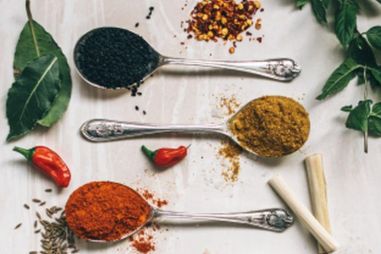Recipte from the Ayurvedic kitchen: Dahl
According to traditional Ayurvedic principles, we should ideally eat what nature provides within a 25-kilometer radius of our birthplace. Nowadays, that area is likely to have more supermarkets than vegetable gardens, but that doesn’t mean you can’t follow an Ayurvedic diet. Ayurveda is based on the concept of the three doshas, which determine an individual’s constitution: vata, pitta, and kapha. Each dosha has its own physical and mental characteristics, and maintaining balance is key to overall well-being. Diet plays an essential role in this balance, as certain foods can either disrupt or restore harmony within a dosha.
For example, someone with a pitta constitution tends to be driven and fiery by nature. For them, spicy foods should be avoided as they can overstimulate their already intense energy. Kapha types, on the other hand, have a calm and easygoing nature. Too much sweetness can amplify their laid-back tendencies, leaving them feeling sluggish and unmotivated. However, for vata individuals, who are naturally restless and quick-moving, sweet foods can have a grounding effect. Bitter foods, which are beneficial for cooling down a pitta, may not be suitable for a vata, as they can increase instability. By understanding your dominant dosha and adjusting your diet accordingly, you can support both your physical and mental well-being in alignment with Ayurvedic wisdom.
Ingredients
- 1 cup mung beans
- 1 ½ tbsp ghee or olive oil
- 1 clove garlic, chopped, or 2 cm fresh ginger root, finely chopped
- 1 to 3 crumbled cloves
- 1 ⅔ tsp cumin seeds
- 2 tsp cumin seeds (check if this is a duplicate in the recipe)
- 1 ⅔ tsp turmeric
- 1 tsp freshly ground black pepper
- 2 to 3 bay leaves
- 1/5 tsp cinnamon, fennel seeds, asafoetida, and cardamom
- 1 stick of kombu (Japanese seaweed, available at Asian stores)
- 4 cups vegetables, finely chopped

Preperation
First, soak the mung beans in water for three days, changing the water twice a day if possible. After three days, bring the sprouted mung beans to a boil along with the kombu. Once they are cooked, remove the kombu, set it aside, and puree the beans with a hand blender. Set the mixture aside.
Heat the oil in a pan and sauté the spices until fragrant. Stir for about two minutes before adding the vegetables. Add 2 to 6 cups of water and the kombu, then bring to a boil. Cover with a lid and let it simmer until the vegetables are almost tender. Next, add the pureed mung beans and, if needed, a bit more water. Let it cook for another five minutes, and it's ready to serve.
Garnish with grated coconut or fresh coriander leaves and serve with basmati rice, barley, quinoa, wheat, or brown rice.
Enjoy!

 EN
EN NL
NL BE
BE















